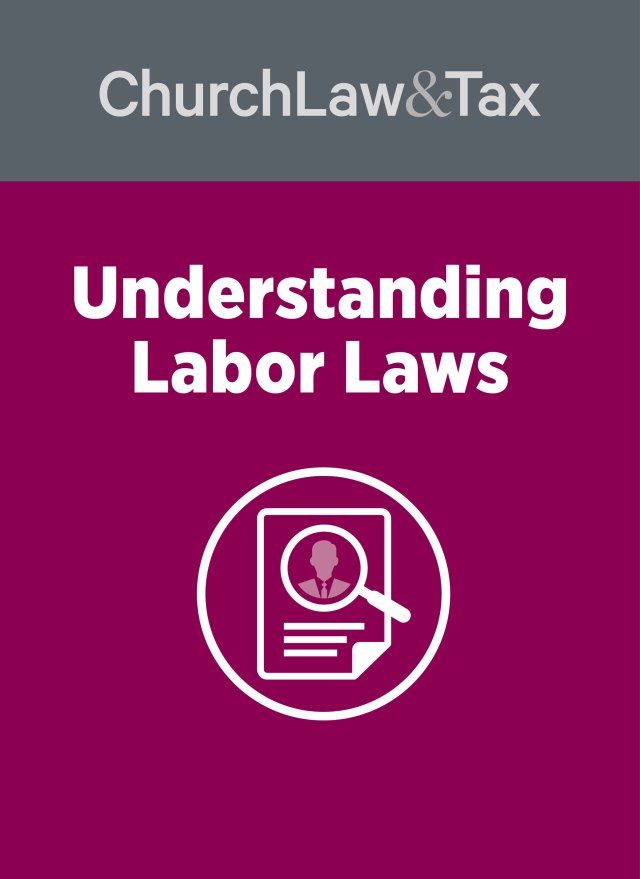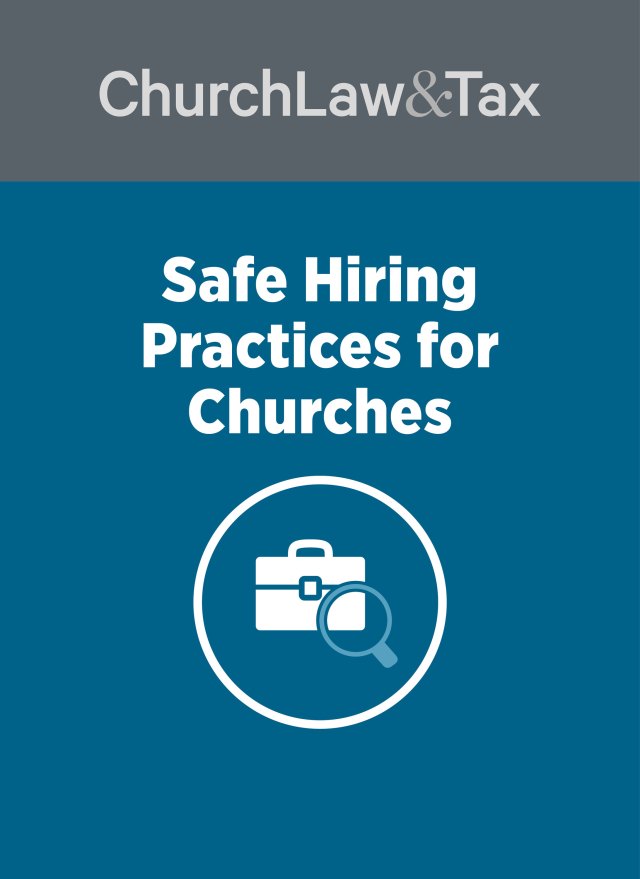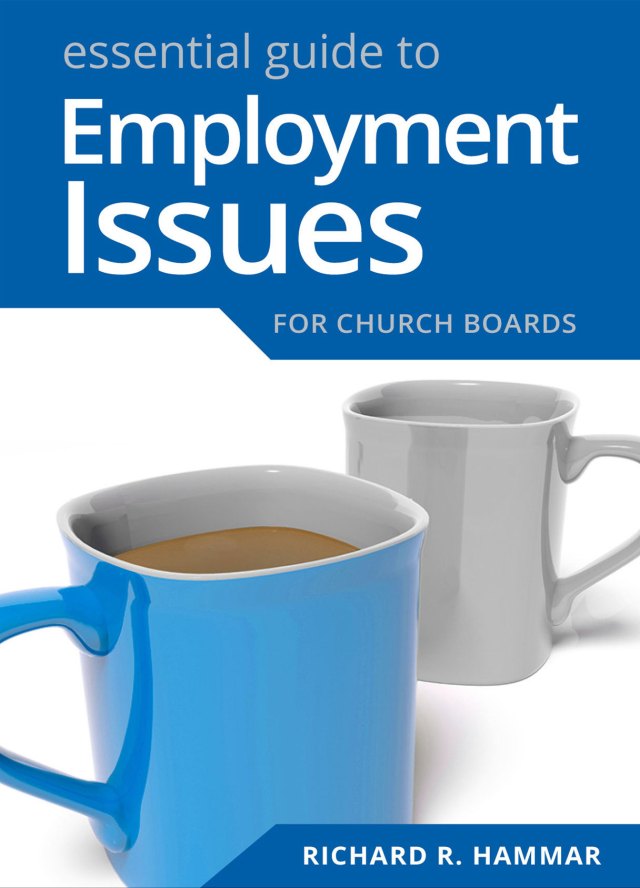Key point 8-07. Employees and applicants for employment who believe that an employer has violated a federal civil rights law must pursue their claim according to a specific procedure. Failure to do so will result in the dismissal of their claim.
Key point 8-09. The federal Age Discrimination in Employment Act prohibits employers with 20 or more employees, and engaged in interstate commerce, from discriminating in any employment decision on the basis of the age of an employee or applicant for employment who is 40 years of age or older. The Act does not exempt religious organizations. Many states have similar laws that often apply to employers having fewer than 20 employees.
* A federal court in Ohio ruled that a dismissed church employee could sue her church for age discrimination. A church hired a 63-year-old woman (Nancy) as an office secretary. Her duties included preparing the church bulletin and maintaining the church calendar, along with a number of other office and administrative tasks. Nancy’s supervisor considered her job performance to be less than satisfactory. As a result, Nancy was placed on probation for three months. At the end of her probationary period, her supervisor felt that she was still making too many mistakes. Examples included a missed home communion visit; double-booking of events caused by errors in the calendar; wrong names placed on baptismal certificates; and an incident involving a volunteer whom Nancy told to come back another time because she was too busy to do the project the volunteer had come to the church to do.
Nancy’s supervisor, and the senior pastor, met with her and told her she would be “retired.” Nancy protested that she didn’t want to retire, but was told the church needed someone better on the computers. She asked what would happen if she did not retire; her supervisor told her she would be fired. Nancy also asked about her pension, because her five-year vesting period would not expire for several months. She was offered the option of staying with the church in a part-time position, at a lower hourly rate, to qualify her for a pension. Nancy declined the offer of a part-time job, and her employment was terminated.
The church’s “Personnel Policy Guidelines” state that “dismissal is generally a last resort and occurs after the employee has received a written warning and has been given an opportunity to improve performance or conduct.” The written warning is to be signed by the employee and the supervisor, and placed in the employee’s personnel file. The church never gave Nancy a formal written warning about her job performance.
Another church employee claimed that Nancy’s supervisor informed her, prior to Nancy’s termination, that the church would probably have to let her go because she was “old and losing it.”
Nancy sued the church in federal court for age discrimination in violation of the federal Age Discrimination in Employment Act, which prohibits employers with 20 or more employees and engaged in interstate commerce from discriminating in employment decisions on the basis of the age of employees who are 40 years of age or older. The church filed a motion for summary judgment with the court.
The court noted that an employee may establish an age discrimination claim by offering either direct or circumstantial evidence of age discrimination.
direct evidence
The court concluded that Nancy had produced sufficient “direct evidence” of age discrimination to overcome the church’s motion for summary judgment. The court defined direct evidence as “evidence that proves the existence of a fact without requiring any inferences,” or, in this case, “evidence that leads directly to the conclusion that age discrimination was a motivating factor in Nancy’s termination.”
The court referred to the following two cases: (1) A federal appeals court ruled that a supervisor’s statement that he and a co-supervisor had a plan to get rid of older workers and replace them with younger, faster workers was direct evidence of discriminatory intent. Ezell v. Potter, 400 F.3d 1041 (7th Cir.2005). (2) A federal appeals court characterized as direct evidence a supervisor’s statement in response to a question about why the plaintiff had been terminated: “Think of it like this. In a forest you have to cut down the old, big trees so the little trees underneath can grow.” Wichmann v. Board of Trustees of Southern Illinois University, 180 F.3d 791 (7th Cir.1999).
The court concluded that the comments attributed to Nancy’s supervisor regarding the reason for her termination were sufficient to defeat the church’s motion for summary judgment. The court stressed that “the evidence must show that the employee’s age was a substantial factor in her termination.” This test was met, the court concluded.
The court ordered Nancy’s direct evidence claim to proceed to trial. It noted that once direct evidence of age discrimination is presented, the burden shifts to the employer to convince the jury that it was more likely than not that the church would have terminated Nancy absent consideration of her age. For its part, the church “can present its evidence to the jury that Nancy’s termination was premised upon her job performance and not upon her age.” That is, if the church convinces a jury that Nancy was fired for poor job performance rather than her age, then her discrimination claim will fail.
circumstantial evidence
Age discrimination can be proven with circumstantial as well as direct evidence. The court defined circumstantial evidence as “evidence that does not on its face establish discriminatory intent, but does allow a jury to draw a reasonable inference that discrimination occurred.” It noted that for a plaintiff to establish an age discrimination claim based on circumstantial evidence, she must initially prove a “prima facie case” by showing that “she is a member of a protected class, she suffered an adverse employment action, she was qualified for her job, and she was replaced by a substantially younger person.” If a plaintiff is successful in proving a prima facie case of discrimination, then a presumption of discrimination arises, and the burden shifts to the employer to show a legitimate, nondiscriminatory reason for the adverse employment decision. If the employer demonstrates a nondiscriminatory reason for the adverse employment action, then the presumption is rebutted and the plaintiff must prove that the nondiscriminatory reason was a pretext for discrimination.
The court concluded that Nancy failed to prove the fourth element of her prima facie case (that she was replaced by a substantially younger person) and therefore it granted the church’s motion for summary judgment with respect to her age discrimination claim based on circumstantial evidence.
Application. This case is important for two reasons. First, it demonstrates that discrimination claims can be proven by either direct evidence or circumstantial evidence. And second, it illustrates how the “burden shifting” analysis that is applied in employment discrimination claims is generally limited to those claims of discrimination that are based on circumstantial rather than direct evidence. Listermann v. Roman Catholic Archdiocese, 2007 WL 1057381 (S.D. Ohio 2007).




